
Overview
Education serves as a powerful transformative force in the lives of ASEAN citizens. Inclusive and quality education is crucial for the sustainable development of the region. High-quality education leads to better health outcomes, increased social capital, peaceful and gender-equal societies, and improved job opportunities. It equips ASEAN’s human resources to be resilient, competitive, and prepared for an ever-changing future. Beyond being a driver of social and economic development, education has the potential to enhance ASEAN awareness and foster a regional identity.
ASEAN upholds global and regional educational commitments by promoting lifelong learning grounded in the principles of equity, inclusion, and quality. Key priorities include advancing future-ready education at both basic and higher levels, as well as in technical and vocational education and training; ensuring inclusive education; enhancing the capacity of education personnel; and mobilizing resources for education through partnerships with various key stakeholders. (Education, n.d.)
Highlights of ASEAN’s efforts in education include:
Supporting students and learners in transitioning to the workforce through internship opportunities, higher education scholarships, and responsive skills development.
Providing teachers and vocational trainers with training in the latest teaching methods and strategies.
Advocating for out-of-school children and youth.
Promoting safe and resilient schools
Education System in 10 ASEAN Member State
1. Brunei Darussalam
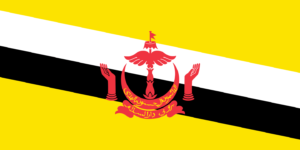
In Brunei, education is free at all levels, including university education abroad, though it is not compulsory. Citizens receive comprehensive support, including free hostels, food, textbooks, and transportation. Education begins with one year of pre-primary, followed by six years of primary school with national tests. Middle education lasts three years, ending with the Brunei Junior Certificate of Education exams, which determine future educational paths. Students with satisfactory results move to secondary school for two to three years, aiming for O-Levels and possibly A-Levels. Those not continuing to secondary school can attend vocational schools offering qualifications in nursing, agriculture, and teaching. Brunei’s tertiary education includes institutes, technical colleges, and the University of Brunei Darussalam, established in 1985. The university focuses on education, research, and community service, with various faculties. The government funds overseas education if local facilities are lacking. (Brunei Education System, n.d.
2. Cambodia
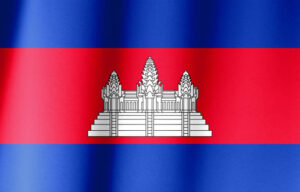
Cambodia’s education system faces many challenges, rooted in its troubled past. Primary education spans six years but is not truly free, with enrollment fees often excluding the poor. Secondary education follows the Vietnamese model and is split into two phases over six years, with underpaid teachers sometimes charging unofficial fees. Vocational programs aim to uplift the poor, offering new opportunities for self-improvement. Higher education includes institutions like the Royal University of Phnom Penh, the Royal Agricultural University, and the Institute of Technology of Cambodia. The Royal University of Phnom Penh, established in 1960 and reopened in 1998, now serves around 4,000 students. (Cambodia Education System, n.d.)
3. Indonesia

In Indonesia, the Ministry of National Education oversees education, mandating six years of primary school and three years of junior high. Primary education, starting optionally with pre-school at age three, is mainly government-controlled, though some schools offer accelerated programs. An Islamic education system runs alongside the secular one. Junior high bridges primary and senior high education, guiding future academic or vocational paths. High schools are divided into academic and workforce-oriented streams, with an Islamic alternative available. Vocational training is mainly urban and privately provided. Tertiary institutions include polytechnics, academies, institutes, and universities, such as the prestigious University of Indonesia, established in 1947. (Indonesia Education System, n.d.)
4. Lao PDR

The Laotian government strives for universal education, initiating a national program providing six years of primary education. However, rural areas often suffer from poor facilities and underqualified teachers, creating a societal divide. Secondary education, comprising two three-year periods with an added year in 2010, underrepresents cultural and language minorities and girls, leading to structural discrimination. Typically, only those aiming for higher education complete the second phase. The French colonial system, based on traditional temple teachings, was expanded by the Laotian government. Established in 1996, the University of Laos merged several colleges and offers diverse faculties including education, economics, agriculture, engineering, and law. (Laos Education System, n.d.)
5. Malaysia
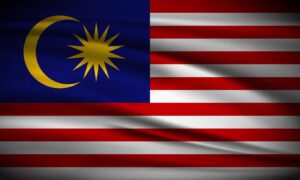
In Malaysia, only primary education is compulsory. Children start primary school at age seven after unregulated preschool, attending for six years and must pass the Primary School Achievement Test to continue their education. Secondary education has no distinct middle school phase but is divided into two stages: three years of general education followed by specialization in either arts or science based on the Lower Certificate of Education exam results. The Department of Skills Development manages vocational training, setting standards for various qualifications. Tertiary education, while controversial due to racial quotas, is progressing towards meritocracy. The University of Malaya, established in 1905, is Malaysia’s oldest university. (Malaysia Education System, n.d.)
6. Myanmar

Myanmar’s education system faces challenges after political unrest. While teachers are good, resources are limited. Primary school requires passing exams, which disadvantages poorer students. Secondary schools offer streams and exams, but university entrance is restricted for some. Vocational training is an option for practical skills. Universities are plentiful but lack freedom. Yangon University is the oldest, but access for women is limited. (Myanmar Education System, n.d.)
7. Philippines
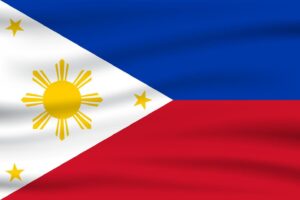
The Philippines has a six-year elementary education system (primary school) followed by four years of high school (secondary school). Filipino, English, Math, Science and Social Studies are core subjects. In high school, the curriculum is the same for public and private schools. Vocational training is offered through private colleges with programs lasting from weeks to two years. Universities can be public (government funded) or private and offer bachelor’s degrees in various fields. English is the main language of instruction in higher education. (Philippines Education System, n.d.)
8. Singapore

Singapore’s education system focuses on academics. After a common primary school program, students are placed in different tracks (express, normal) based on abilities. Secondary schools offer various programs (O Levels, N Levels) with different lengths but similar qualifications. Vocational training is available, and the government aims to increase enrollment. Universities require additional studies after high school. National University of Singapore is the oldest university. (Singapore Education System, n.d.)
9. Thailand
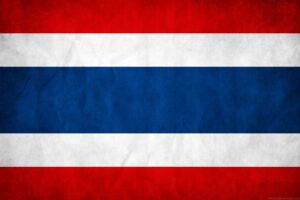
Thailand’s education system starts with preschool and kindergarten, followed by six years of primary school. Middle school lasts three years and includes core subjects like math and science. High school offers both academic programs for university prep and vocational programs for careers. Universities are public or private, with some Thais choosing to study abroad. Chulalongkorn University is the oldest and most respected university in Thailand. (Thailand Education System, n.d.)
10. Vietnam

Vietnam boasts a high literacy rate of 90%, with children starting public kindergarten at 18 months. Formal education begins at age six with compulsory five-year primary schooling. Afterward, students may attend non-compulsory intermediate education for four years before moving on to secondary school, which requires passing an entrance exam. The curriculum includes a wide range of subjects, with prestigious schools offering advanced courses. Since 1987, vocational education has been integrated into a system offering 1-3 years of training. University admission demands high grades and exam scores, crucial for disadvantaged students. Private universities, comprising 11%, struggle with quality, cost, and bureaucracy. (Vietnam Education System, n.d.)
Conclusion
The education systems across ASEAN member states exhibit both shared goals and unique challenges, reflecting their diverse socio-economic landscapes and historical contexts. Education is a critical tool for development in the region, promoting better health, social cohesion, gender equality, and job opportunities. ASEAN nations emphasize inclusive and quality education, striving to create future-ready and resilient human resources.
Each country has distinct features in its education system. For instance, Brunei provides free education at all levels, while Cambodia faces challenges in recovering from its past. Indonesia and Vietnam maintain centrally controlled systems, with a focus on bridging urban-rural disparities. Malaysia’s multilingual approach and Myanmar’s vocational training highlight different strategies to cater to diverse populations. Singapore’s highly structured system and Thailand’s comprehensive approach to vocational education underscore their commitment to equipping students with relevant skills. The Philippines focuses on standardizing secondary education, and Laos aims for universal primary education despite infrastructure challenges.
ASEAN’s collective efforts in promoting lifelong learning, vocational training, and higher education signify a regional commitment to fostering educational excellence. Despite varying stages of development, the shared objective of enhancing educational quality and access underscores the region’s dedication to sustainable and inclusive growth.
References
Brunei Education System. (n.d.). Scholaro. Retrieved May 30, 2024, from https://www.scholaro.com/db/Countries/Brunei/Education-System
Cambodia Education System. (n.d.). Scholaro. Retrieved May 30, 2024, from https://www.scholaro.com/db/Countries/Cambodia/Education-System
Education. (n.d.). ASEAN.org. Retrieved May 29, 2024, from https://asean.org/our-communities/asean-socio-cultural-community/education/
Education System Definition and Meaning. (n.d.). Top Hat. Retrieved May 30, 2024, from https://tophat.com/glossary/e/education-system/
Indonesia Education System. (n.d.). Scholaro. Retrieved May 30, 2024, from https://www.scholaro.com/db/Countries/Indonesia/Education-System
Laos Education System. (n.d.). Scholaro. Retrieved May 30, 2024, from https://www.scholaro.com/db/Countries/Laos/Education-System
Malaysia Education System. (n.d.). Scholaro. Retrieved May 30, 2024, from https://www.scholaro.com/db/Countries/Malaysia/Education-System
Myanmar Education System. (n.d.). Scholaro. Retrieved May 30, 2024, from https://www.scholaro.com/db/Countries/Myanmar/Education-System
Philippines Education System. (n.d.). Scholaro. Retrieved May 30, 2024, from https://www.scholaro.com/db/Countries/Philippines/Education-System
Singapore Education System. (n.d.). Scholaro. Retrieved May 30, 2024, from https://www.scholaro.com/db/Countries/Singapore/Education-System
Thailand Education System. (n.d.). Scholaro. Retrieved May 30, 2024, from https://www.scholaro.com/db/Countries/Thailand/Education-System
Vietnam Education System. (n.d.). Scholaro. Retrieved May 30, 2024, from https://www.scholaro.com/db/Countries/Vietnam/Education-System
ation-System
